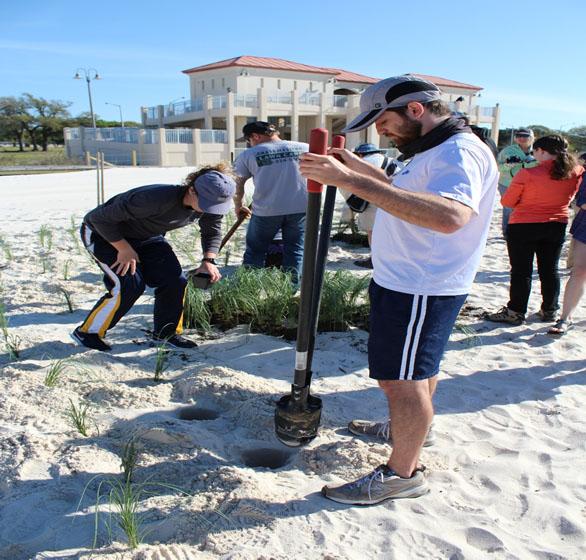News Releases from Region 04
EPA Partners with Harrison County Sand Beach Authority on Sea Oats Project
Sea oats planted on Biloxi Beaches to help control erosion and provide buffer to benefit aquatic habitat
Biloxi (March 22, 2019) – Today, the U.S. Environmental Protection Agency’s (EPA) Gulf of Mexico Program along with the Harrison County Sand Beach Authority and several local partners participated in a dune vegetation planting project on 1703 Beach Blvd in Biloxi, Mississippi.
During a small ceremony announcing the project, students from Gulfport High School, Long Beach High School and volunteers from several local partner organizations, including Audubon Society, Mississippi State University Coastal Extension and Research Center and Mississippi Wildlife Federation, assisted with the planting of 3000 sea oats.
“I’m extremely pleased to partner with the Harrison County Sand Beach Authority,” said EPA Acting Region 4 Administrator Mary S. Walker. “This dune development project is a great example of our state, federal, and local governments working together to increase community resilience while protecting our Mississippi Gulf coast.”
“Dune grasses stabilize the beach and help build up the dune systems, protecting infrastructure from flooding and erosion,” said Harrison County Sand Beach Authority Director Chuck Loftis. “Sea Oats are very effective at trapping sand and are a huge recourse for keeping wind-blown sand off Highway 90. Overall, this reduces road maintenance costs and strengthens community resilience to coastal hazards.”
This vegetation will stabilize the dunes, thereby controlling sand erosion and providing a buffer against coastal hazards like flooding and supply a unique habitat for wildlife. This beach is in critical need of additional vegetation due to its proximity to development and increased levels of public use.
EPA’s Gulf of Mexico Program (GMP) began in 1988 to protect, restore and maintain the health and productivity of the Gulf of Mexico ecosystem in economically sustainable ways. The GMP is committed to non-regulatory scientifically sound actions centered on partnerships with local, state and federal governmental agencies, academia, business and industry, and the public.
More information about the GMP, visit https://19january2021snapshot.epa.gov/gulfofmexico.
 University of Southern Mississippi students, Gulfport High School students, and community volunteers plant sea oats, photo by Colby McClain.
University of Southern Mississippi students, Gulfport High School students, and community volunteers plant sea oats, photo by Colby McClain.
